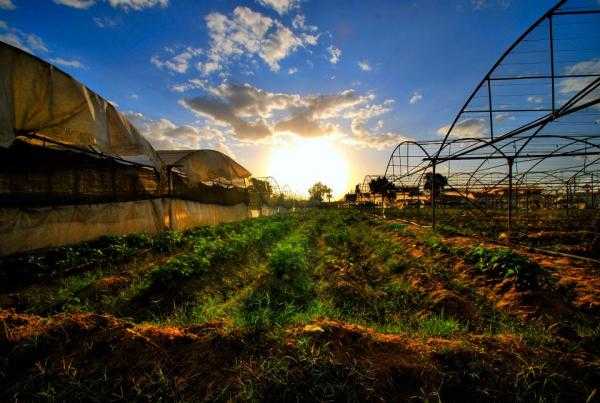[video:https://vimeo.com/106242044?byline=0]
When will the Earth reach its climate tipping points?
Source: Disruption, 2014

The Intergovernmental Panel on Climate Change (IPCC) is releasing its Fifth Assessment Report (AR5) on Friday.
The report is the culmination of more than 800 scientist authors working with more than 9,000 scientific publications on climate change and more than 20,000 comments from 'expert reviewers,' making it the most comprehensive collection of climate change knowledge to-date.
You can watch the livestream of the report's release on September 27th at 8.30am EDT and learn more about climate science, the IPCC, and the AR5 at The Climate Group.

The impact of climate change will be especially acute in the Middle East and North Africa (MENA) region, according to a new World Bank Group report, and immediate action will be needed to avoid the projected consequences of worsening water shortages and rising food insecurity. Adaptation to a Changing Climate in the Arab Countries provides a comprehensive assessment of the threat to the region posed by increasingly severe weather, and offers a set of policy options for the urgent task of managing current effects and building resilience against those yet to come.
“Reducing vulnerability to climate change will require concerted action on multiple levels,” said Rachel Kyte, World Bank Vice President for Sustainable Development. “Political leadership now, will be critical in establishing climate change as a national and regional priority.”
The Arab world has been adapting to climate change for centuries. There is a long history and tradition of coping with the associated challenges, such as changes in temperature and rainfall. New climate change risks are emerging at a much faster rate, including the prospect of a world that is four degrees hotter, and resilience built up over years is being severely tested.
These risks have been identified and assessed in the new climate report which was prepared in partnership with the League of Arab States, involving specialists, researchers, policymakers and civil society organizations from across the region. The report reinforces the warning that decades of poverty reduction efforts could be reversed as contained in the recent World Bank publication, Turn Down The Heat: Why a 4° C Warmer World Must be Avoided.

Over the past 30 years, climate disasters have affected 50 million people in the Arab world, costing about $12 billion directly and many multiples of that indirectly. Recent trends suggest that dry regions are becoming drier and flash floods have become more frequent. The 2006 flooding of the Nile River Basin led to 600 deaths, with a further 118,000 people affected, while in 2008 a record five-year drought finally ended in the Jordan River Basin.
Globally 2010 was the warmest year since records began in the 1800s, and of the 19 countries that set new record temperatures, five were in MENA. Regional temperatures are projected to reach new record highs, coupled with less rainfall which, in a region with the world’s lowest endowment of freshwater, could make this precious natural resource even scarcer.
A harsher climate threatens livelihoods throughout the region. Extreme weather could affect both the annual US$50 billion tourism industry and agriculture, already under severe climate stress. The combination of higher temperatures, lower rainfall and increased frequency of drought could cause more crop failures and lower yields putting MENA’s rural population, nearly half the region’s total, under growing stress. Migration to already overcrowded cities and vulnerable costal zones would accelerate. Yet a further consequence of climate change could be the upending of traditional social roles, as it is usually the men who migrate for low-wage, low-skill jobs, and the women who remain behind with all the farming and community responsibilities.
“Climate change is a reality for people in Arab countries,” said Inger Andersen, World Bank Vice President for the Middle East and North Africa region. “It affects everyone – especially the poor who are least able to adapt – and as the climate becomes ever more extreme, so will its impacts on people’s livelihoods and wellbeing. The time to take actions at both the national and regional level in order to increase climate resilience is now.”
The report stresses that adaptation should be integrated into all national policies and actions to ensure they are climate resilient. This spans efforts from collecting climate data to strengthening basic services. Accurate weather information is critical for preparing for extreme events. Improved access to services such as education, health and sanitation, along with effective social safety nets to compensate for sudden loss of livelihood, will give citizens the skills and resources to navigate climate challenges.
The World Bank Group is currently engaged across the region in supporting countries and communities in coping with the effects of a changing climate. A project in Morocco is financing the integration of adaptation measures into the national agriculture strategy, while in Yemen more effective land management is being promoted, along with research into drought resistant crops. Moreover, sustainable development, increasing social and economic inclusion and improving governance – the essential ingredients for building and maintaining resilience – are overarching goals of all Bank activities throughout the region.
Contacts:
In Washington: Lara Saade, (202) 473-9887, lsaade@worldbank.org;
In Doha: Ashraf Al-Saeed, +974 7790 5578, aalsaeed@worldbank.org
For more information, please visit: http://www.worldbank.org/mna
Visit us on Facebook: http://www.facebook.com/WorldBankMiddleEastNorthAfrica
Be updated via Twitter: http://www.twitter.com/worldbank
For our YouTube channel: http://www.youtube.com/worldbank

A bond is a fixed-income asset issued by a public or private entity that wants to raise capital for their work. When an investor buys a bond they are purchasing debt to be paid back to them at a specific amount on a set time schedule.
But what do bonds have to do with climate change? Bonds can be used as a mechanism to allocate capital towards addressing social and environmental problems. Social impact bonds are gaining traction for a wide variety of social issues. Through the purchase of green bonds, also known as climate bonds, investors can assist in the funding of climate change projects.
The International Finance Corporation (IFC), the finance arm of the World Bank Group, is leading the way when it comes to green bonds. Large name investors in IFC’s issuance include Blackrock, State Street Global Advisors, and California Public Employees’ Retirement System. In February 2013 IFC issued one billion US dollars in green bonds—the largest amount by any entity to date. These bonds are solely for funding renewable energy, energy efficiency, and other climate projects in developing countries.
International organizations are not the only actors moving forward with green bonds, and projects are not confined to developing countries. The Climate Bonds Initiative, which provided the Climate Bonds Standard in 2011 to help investors screen the validity of the environmental claims of green bonds, released an extensive Bonds and Climate Change: the state-of-the-market in 2013 report. Here are the highlighted statistics:
- The total universe of bonds linked to key climate themes stands at USD 346 billion, double last year’s estimate
- The issuance of new climate-themed bonds was USD 74 billion in 2012, up 25% on 2011.
- China accounts for USD 127 billion of the total, followed by the UK and France.
- CO2 transport, notably rail, accounts for 75%, followed by clean energy and climate finance.
- 89% of the USD 346 billion universe is investment grade
Momentum and the market for green bonds is building. Green bonds and climate bonds were one of the main discussion points at the UN Investor Summit on Climate Risk 2014 (watch the video below) where 500 global financial leaders recently came together in New York. The Green Bond Principles were also recently created, reflecting the commitment of large investment banks such as JP Morgan Chase, Bank of America Merrill Lynch, Citi, HSBC, Morgan Stanley, and many others. The Principles are multi-stakeholder developed, voluntary guidelines. According to the press release, The Principles were designed to:
‘to provide issuers with guidance on the key components involved in launching a Green Bond, to aid investors by ensuring the availability of information necessary to evaluate the environmental impact of their Green Bond investments and to assist underwriters by moving the market towards standard disclosures which facilitate transactions’.
Standardization will help all parties understand the emerging green bond market and encourage its effectiveness and growth. Green bonds are the next step in using market mechanisms for climate change adaptation and mitigation around the world, increasing investors’ ability to directly support a transition towards low-carbon economies.



